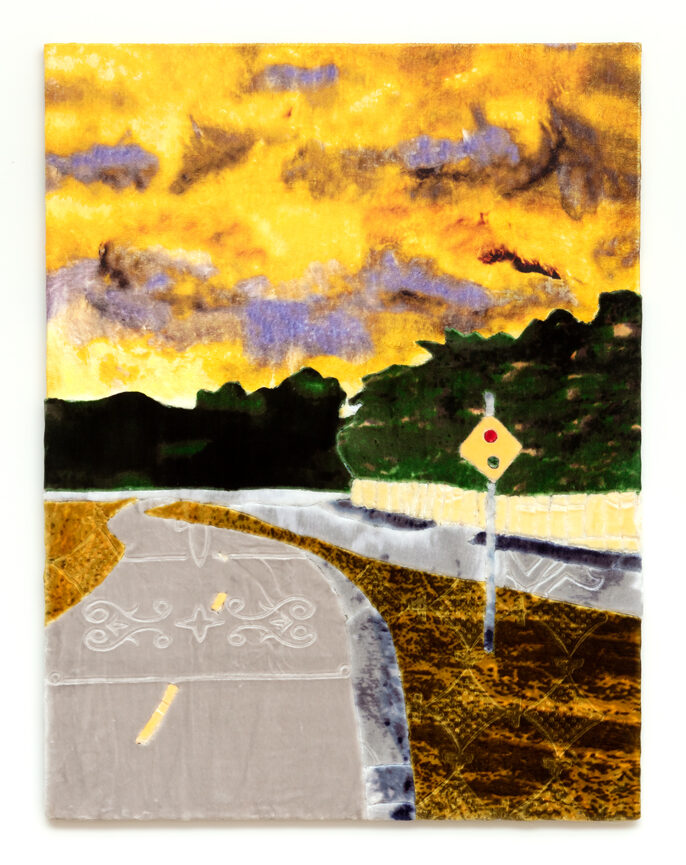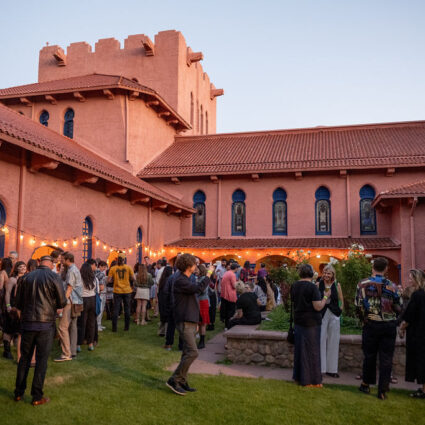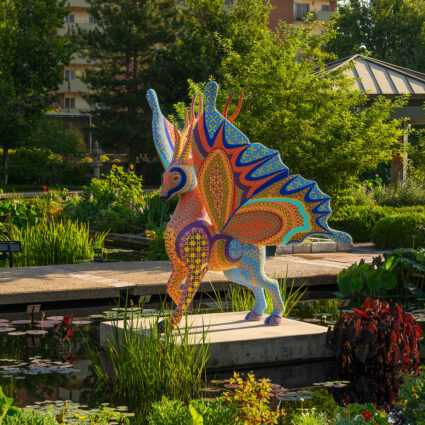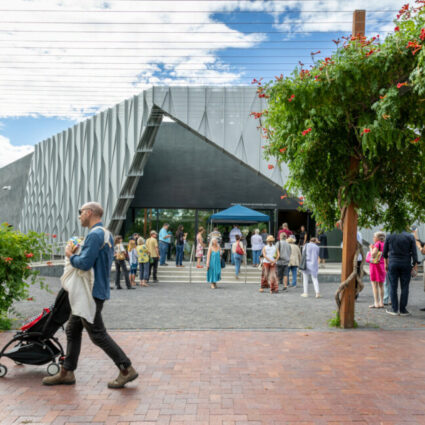Antonio Lechuga shrouds spaces in vibrant fleece blankets called cobijas, offering care, comfort, and commentary on gun violence.

Dallas, Texas | lettucelook.com | @lettucelook
Antonio Lechuga’s Dallas studio is overflowing with stacks of plastic-wrapped cobijas, the warm fleece blankets—sometimes featuring stately lions, serene deer, lavish floral prints, or the reverent Virgin of Guadalupe—that are a staple in many Latinx homes. Though his earlier works use denim, known for its rough and durable qualities, these plush throws have become the artist’s main medium in recent years, as Lechuga has become more interested in care and comfort.
In his ninety-two-foot-long installation Flowers for the Living – 2022 (2024), Lechuga assembled 647 flowers, cut from cobijas, into a massive memorial. At first sight, the work recalls opulent floral still lifes of the 16th century. Like those paintings, Lechuga’s work is about something darker—mortality. Specifically, the artist created this piece to recognize the 647 victims of mass shootings that occurred in the U.S. in 2022.
That same year, the artist was shot multiple times while jogging near his home in Old East Dallas. Lechuga’s personal experience highlights larger issues around gun violence in Dallas, Texas, and the U.S., which he incorporates into his work, while also creating pieces that address other sociopolitical issues, such as migration.
Lechuga says, “[My art] investigat[es] my culture and existence; both my existence and experiences as a Tejano living in the 21st century and [the] constant battle with the erasure of that history.”
Tempering the necessity of highlighting these acts of violence, Lechuga also actively celebrates his culture through softer pieces like Quince and Boda (both 2024), referencing the quinceañera as a communal celebration that brings family and friends together to uplift a young woman coming into her own. The works’ shapes and silhouettes represent quince gowns, like the ones teens and their families flock to find on Jefferson Street in Dallas’s Oak Cliff community. As such, Lechuga’s work toggles between honoring the beauty and joy of his community and amplifying the adversity endured by Latinx communities.









